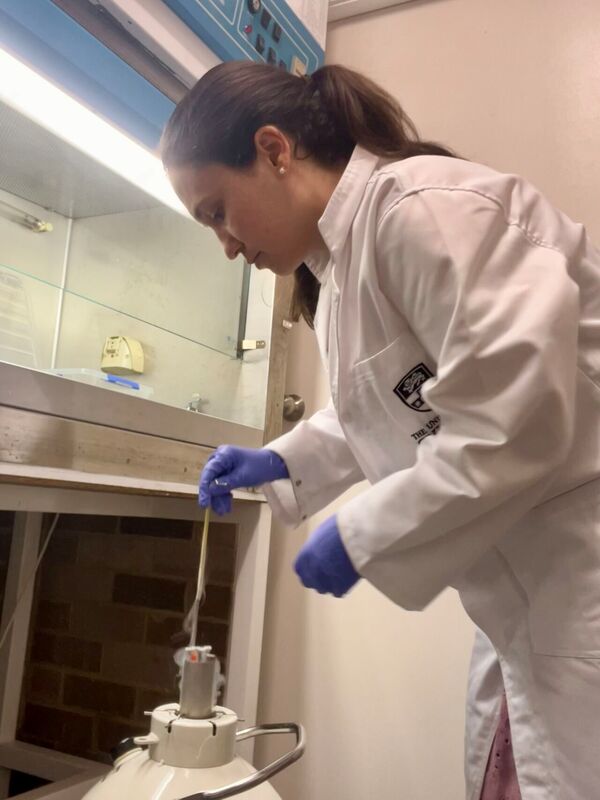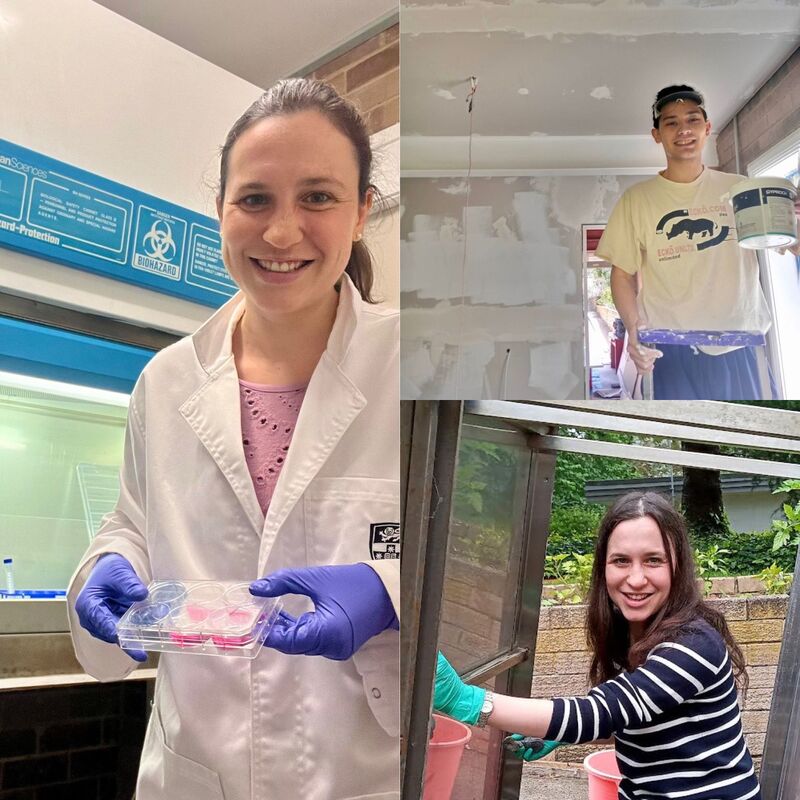|
Microplastics absolutely everywhere - even in the milk we feed our babies!? Some scary science & the startup companies you should be aware of:
➡️ The big issue: Microplastics are tiny plastic particles. At 5-100nm in size, they enter humans by ingestion, inhalation, and dermal contact, but research using animal models and human cell lines suggests they’re also responsible for health problems. 🍼 Science deep-dive: Recently, microplastics were found in breast milk of 26 out of 34 new mothers. No relationship with the use of personal care products containing plastic compounds or consumption of food and drink in plastic packaging was identified, suggesting microplastics are pretty much unavoidable at this point. 👩🏽🔬 Keen to get involved? Startups like Matter. and Xampla (UK), Uluu (AU), and Mushroom Material (NZ) are building in this space by: ✅Removing microplastics from the environment ✅Recycling those microplastics ✅Replacing plastics with sustainable alternatives
0 Comments
Viruses that attack bacteria, the immunology of breast milk, and how your DNA remembers fear. A little February round up of the cool science I’ve been digging into this month:
1️⃣ Breast milk has live stem cells in it. When you isolate these cells and expose them to the right nutrients, they can produce milk. This is the basic premise behind some of the early-stage companies centered around laboratory-grown breast milk. These milk-derived stem cells also have unusually low tumorigenic potential and don’t often form teratomas, which could make them great candidates for regenerative therapies. 2️⃣ Phages can be engineered to specifically target and kill cancer cells. Bacteriophages are viruses that infect bacteria, rather than eukaryotic cells like those found in humans. The potential use cases for phages are broad, ranging from human health to agriculture. Use of phages in cancer therapies is still early stage, but there’s a lot to suggest they could become a crucial therapy in years ahead. 3️⃣ Fear triggers epigenetic changes that can persist long-term. Better understanding of these molecular mechanisms could lead to better treatments for post-traumatic stress disorder. It also suggests that certain phobias - spiders, snakes - may be inherited from our ancestors. 1. https://www.ncbi.nlm.nih.gov/pmc/articles/PMC6570695/ 2. https://www.ncbi.nlm.nih.gov/pmc/articles/PMC10684691/ 3. https://www.nature.com/articles/s41380-024-02453-4 Here’s what I’ve been doing in my lab, plus some interesting science that you probably didn’t know:3/13/2024 14 years ago, the first journal club I ever delivered looked at the effects of culturing cells in serum derived from different animals. These findings have lived rent-free in my mind through subsequent years of working in academic, government, and industry laboratories:
🐭 Mouse cells cultured in human serum had a human-centric immune response. 👵 Human cells cultured in mouse serum had a mouse-centric immune response. …..And isn’t it interesting to consider these results in light of the fact that (all types of) cells are most commonly cultured in serum from foetal cows? 🐮 Like many scientists, I’ve cultured a lot of cells in foetal bovine serum (FBS) because “it works” and “that’s how it's done.” Like many scientists, I could also list the many reasons why FBS is far from ideal scientifically and ethically. In my lab, I’ve been developing an alternative to FBS that supports the growth of the most nutritionally demanding primary cell types. I’m a scientist - so I’m naturally skeptical - but I've gained enough confidence in my results to incorporate a company. Introducing Media City Scientific - That feels really cool. And while it feels strange to be public about this, I’ve benefited massively from working at a hypergrowth startup, watching & learning from the founders. I want to pay that forwards for other scientists thinking about the many directions in which their careers could take them. Who knows, maybe you’ll also find your career circling back to the very first journal club you ever delivered. Today the fibroblasts need passaging. I’m also thawing some muscle cells for a new cell bank and I’m drafting an experimental plan to isolate a third type of cell from breast milk. I only recently learned there are live stem cells in breast milk - isn't science cool!? Given I had a baby less than a year ago, now’s the time to get these cells and bank them for future research!
Over the weekend, I heard good news about being short-listed in an entrepreneurship competition. The final is in four weeks and will be my first time pitching to a broad audience, so I've got a very clear set of experiments to knock over before then - I find these sorts of short-term deadlines really helpful for making sure I'm prioritising correctly. It's been two months since I left my job to focus on building. So much can change in 60 days if you’re dedicated to making a bit of progress everyday - I’m not going to pretend it’s not hard work and that imposter syndrome doesn’t still kick in weekly (at least it's an improvement from daily) but I’m feeling very grateful that I have the opportunity to do this for a little while! Let me tell you about the coolest thing I've ever built: our independent cell culture facility3/3/2024 A massive barrier to entry in biotech is finding lab space to prototype or generate basic proof of concept. You need to keep costs low, but you also need to ensure you retain the rights to the IP (which can be an issue with university labs).
I explored some rental options but each one required significant expense & a commute that would slow down experimentation rates. Then one evening, Christopher Day asked "why can't we just build our own?" So we built our own. It made sense for practical reasons, but let’s be real - it has also been incredibly exciting! Here’s why building was the right choice for me: 1️⃣ I knew exactly what I needed from the second-hand lab equipment market. When I costed out equipment versus renting space for 12 months, the prices lined up. 2️⃣ I already owned the space nearby. 3️⃣ It provides the flexibility to duck in and out every day of the week. Maybe build-your-own isn’t right for you. That's okay - most major cities have rental options, though they can be tricky to find. If you’re in the Sydney area, here are some ideas: (i) I previously worked at a startup company operating out of The Future Project at the Kings School - https://www.kings.edu.au/connecting/the-future-project/ (ii) Another option is yild - https://yild.com.au/ (iii) Co-labs is also reportedly establishing a Sydney presence soon. My previous employer worked with them in Melbourne and they were great - https://colabs.com.au/. ________ Pictured: Today, we have happy mammalian cells growing in antibiotic-free media. 👩🏽🔬 To get there, it took some elbow grease! Learning to dry-wall & cleaning some stainless-steel lab benches 🛠 |
What's been happening?Sharing the Media City journey is important to us because we want to encourage the next generation of scientists to establish companies that will advance scientific research. Check back regularly for the "building in public" updates on what it looks like to establish a scientific company. Archives
June 2024
Categories |



 RSS Feed
RSS Feed
